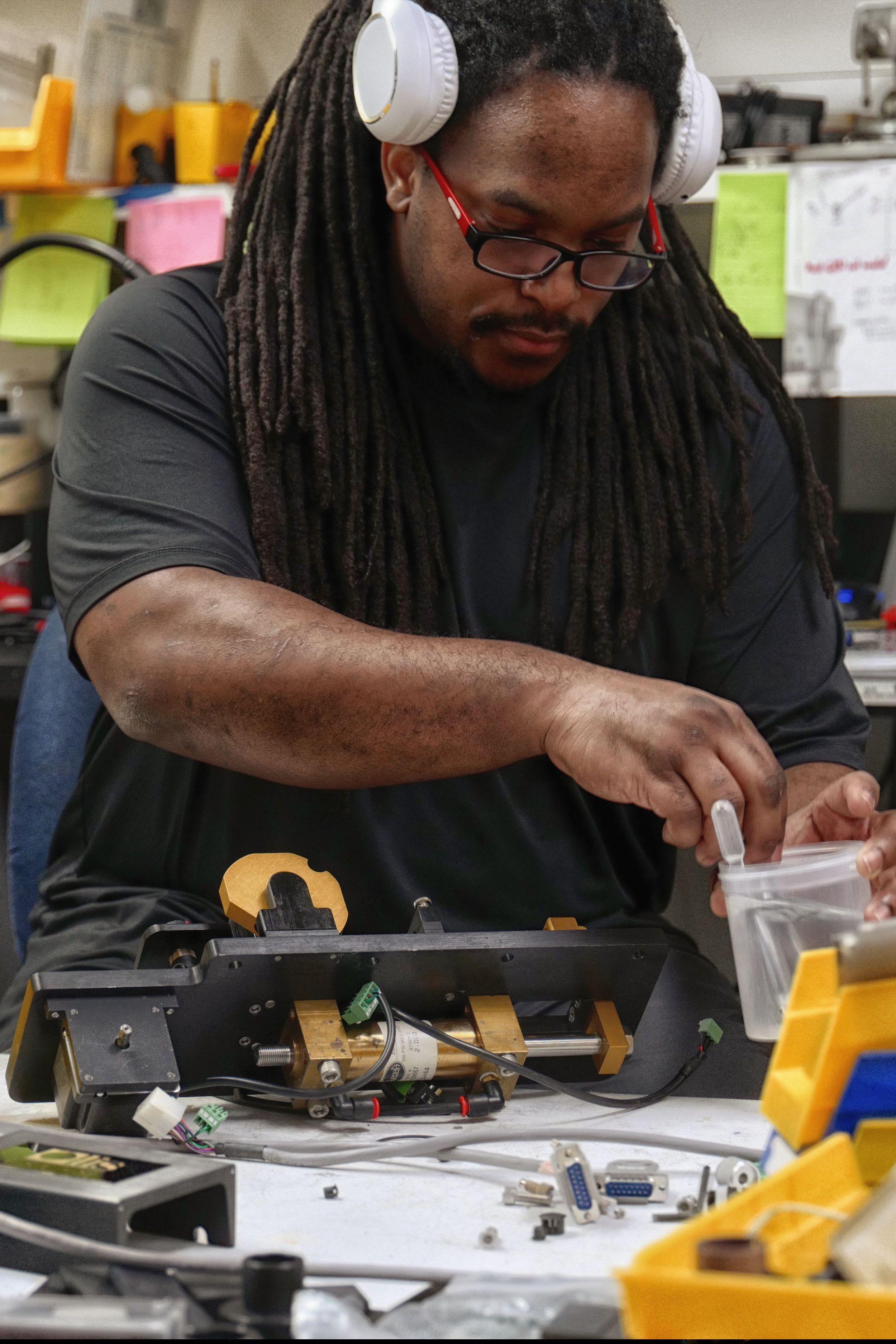Some Known Factual Statements About Spectrophotometers
Some Known Factual Statements About Spectrophotometers
Blog Article
Getting My Uv/vis/nir To Work
Table of ContentsAbout Circular DichroismSome Known Incorrect Statements About Uv/vis/nir An Unbiased View of SpectrophotometersThe 10-Second Trick For Uv/visUv/vis/nir for Beginners

Spectrophotometry is a tool that hinges on the quantitative analysis of particles depending on how much light is absorbed by colored compounds.
The Only Guide to Uv/vis
A spectrophotometer is typically utilized for the measurement of transmittance or reflectance of options, transparent or nontransparent solids, such as polished glass, or gases. Numerous biochemicals are colored, as in, they soak up noticeable light and therefore can be measured by colorimetric treatments, even colorless biochemicals can typically be converted to colored compounds ideal for chromogenic color-forming reactions to yield compounds appropriate for colorimetric analysis.: 65 Nevertheless, they can likewise be developed to measure the diffusivity on any of the listed light ranges that generally cover around 2002500 nm using different controls and calibrations.
An example of an experiment in which spectrophotometry is utilized is the determination of the stability constant of a service. A particular chain reaction within a service may take place in a forward and reverse direction, where reactants form products and items break down into reactants. Eventually, this chain reaction will reach a point of balance called a balance point.
The Main Principles Of Uv/vis
The amount of light that passes through the option is indicative of the concentration of specific chemicals that do not permit light to pass through. The absorption of light is because of the interaction of light with the electronic and vibrational modes of molecules. Each type of particle has a private set of energy levels associated with the makeup of its chemical bonds and nuclei and hence will take in light of particular wavelengths, or energies, resulting in distinct spectral properties.
Using spectrophotometers covers numerous scientific fields, such as physics, products science, chemistry, biochemistry. UV/Vis, chemical engineering, and molecular biology. They are extensively utilized in many industries including semiconductors, laser and optical production, printing and forensic assessment, along with in laboratories for the study of chemical substances. Spectrophotometry is often utilized in measurements of enzyme activities, determinations of protein concentrations, decisions of enzymatic kinetic constants, and measurements of ligand binding reactions.: 65 Ultimately, a spectrophotometer is able to figure out, depending on the control or calibration, what compounds are present in a target and exactly just how much through estimations of observed wavelengths.
Created by Arnold O. Beckman in 1940 [], the spectrophotometer was developed with the aid of his colleagues at his business National Technical Laboratories founded in 1935 which would end up being Beckman Instrument Business and ultimately Beckman Coulter. This would come as an option to the formerly produced spectrophotometers which were not able to soak up the ultraviolet properly.
3 Simple Techniques For Spectrophotometers
It would be discovered that this did not give satisfactory outcomes, therefore in Design B, there was a shift from a glass to a quartz prism which permitted much better absorbance outcomes - YOURURL.com spectrophotometers (https://allmyfaves.com/olisclarity1?tab=Olis%20Clarity). From there, Design C was born with an adjustment to the wavelength resolution which wound up having 3 systems of it produced
It irradiates the sample with polychromatic light which the sample absorbs depending on its homes. It is sent back by grating the photodiode variety which discovers the wavelength area of the spectrum. Ever since, the production and implementation of spectrophotometry gadgets has actually increased profoundly and has actually turned into one of the most innovative instruments of our time.

The Single Strategy To Use For Spectrophotometers
The grating can either be movable or repaired.
In such systems, the grating is repaired and the strength of each wavelength of light is determined by a different detector in the array. In addition, most contemporary mid-infrared spectrophotometers use a Fourier transform strategy to obtain the spectral information - https://disqus.com/by/julieanndesalorenz/about/. This method is called Fourier change infrared spectroscopy. When making transmission measurements, the spectrophotometer quantitatively compares the fraction of light that travels through a reference option and a test option, then digitally compares the intensities of the 2 signals and calculates the percentage of transmission of the sample compared to the referral requirement.

Report this page